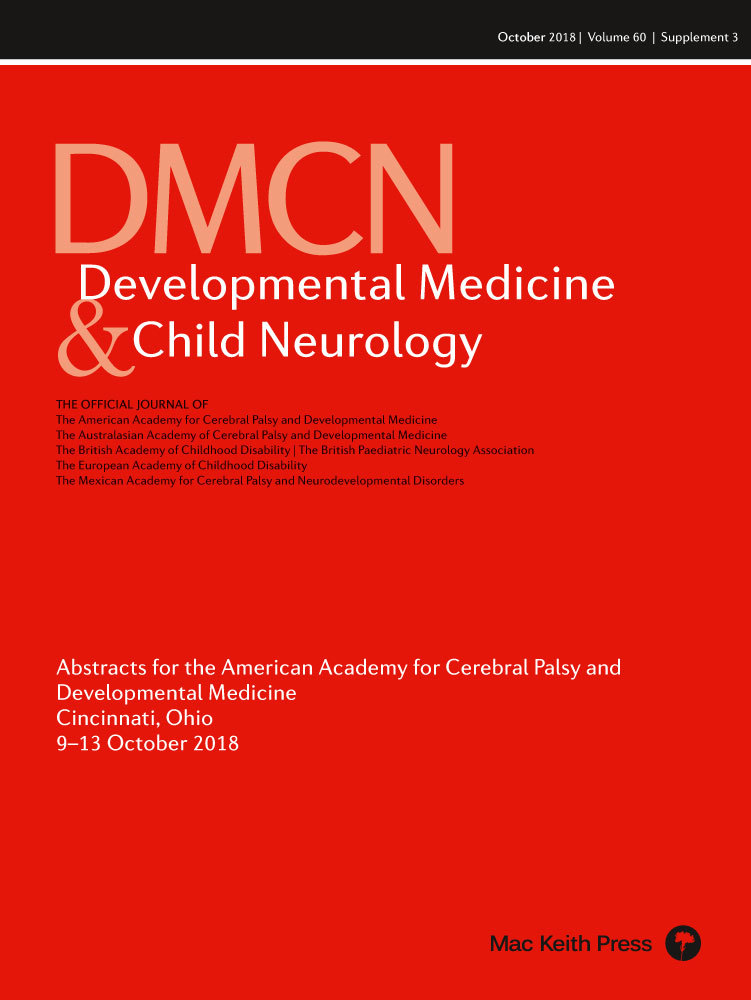Child and family characteristics and receipt of core early intervention services
D1
B McManus1, Z Richardson1, B Scully2, J Dooling-Litfin2, N Murphy1, M Khetani3
1Colorado School of Public Health, Aurora, CO, USA; 2Rocky Mountain Human Services Early Intervention Prorgam, Denver, CO, USA; 3University of Illinois-Chicago, Chicago, IL, USA
Background and Objective(s): In an era of increased accountability of early intervention (EI) programs to demonstrate service effectiveness, it is critical to understand core EI service use patterns and how diagnostic, social, and functional characteristics of enrolled children relate to their service use. Prior studies show that children who are poor, minority, and have a diagnosed condition (versus delay) are less likely to access EI. Similar disparities persist in EI service use (breadth and intensity). Yet, previous studies relied on diagnostic information without adequately capturing service need based on the child's function. Yet, functional data are routinely collected by EI programs for mandated outcomes reporting. The purpose of this study is to describe children's diagnostic, social, and functional characteristics associated with EI access and core service use.
Study Design: Secondary Data Analysis.
Study Participants & Setting: Data were drawn from an electronic EI database of 2,045 children (ages: <12 month: 26% [n=531], 12–24 months: 39.8% [n=814], and 24+months: 34.2% [n=700]; 36.5% [n=747] female) discharged from a large, urban EI program between 2013 and 2015.
Materials/Methods: The primary outcome was EI core service use (e.g., physical and occupational therapy). Adjusted logistic regression estimated the odds (95% CI) of receiving any (i.e., at least 1 visit) of the four core EI services, controlling for the child's developmental condition type, race and ethnicity, language, sex, insurance type, age at referral, and functional performance at EI entry. Adjusted median regression estimated EI core service intensity (hours per month, b [95% CI]) controlling for child and family characteristics.
Results: Children were predominantly Hispanic (42%) or white, non-Hispanic (41%), male (63%), English-speaking (76%), and had a developmental delay (90%). Children with diagnoses (versus delay) had higher odds of receiving any PT [OR=2.36 (1.5, 3.6)] and OT [OR=2.09 (1.3, 3.3)]. Hispanic children had lower odds [OR=0.64 (0.4, 1.0]) of receiving any PT, whereas females had lower odds of receiving any OT [OR=0.71 (0.5, 1.0)]. Older infants received more intensive PT, whereas Black, non-Hispanic children received more intensive OT (b=0.76 [0.04, 1.5]). Children whose primary language is English received less intensive PT (b=-0.51 [-0.9, -0.1]) and OT (b=-0.69 [-1.2, -0.2]). Children's functional performance at EI entry was significantly associated with receipt and intensity of some core EI services.
Conclusions/Significance: Social disparities in core EI service use persist, even after controlling for the child's baseline functional performance to indicate service need. Study findings provide an improved framework for replication among other EI programs who are collecting functional data for outcomes reporting purposes. These “scale up” EI outcomes research efforts may better inform future comparative effectiveness research, including pragmatic trials of best practice EI access and service delivery for optimal child and family outcomes.




